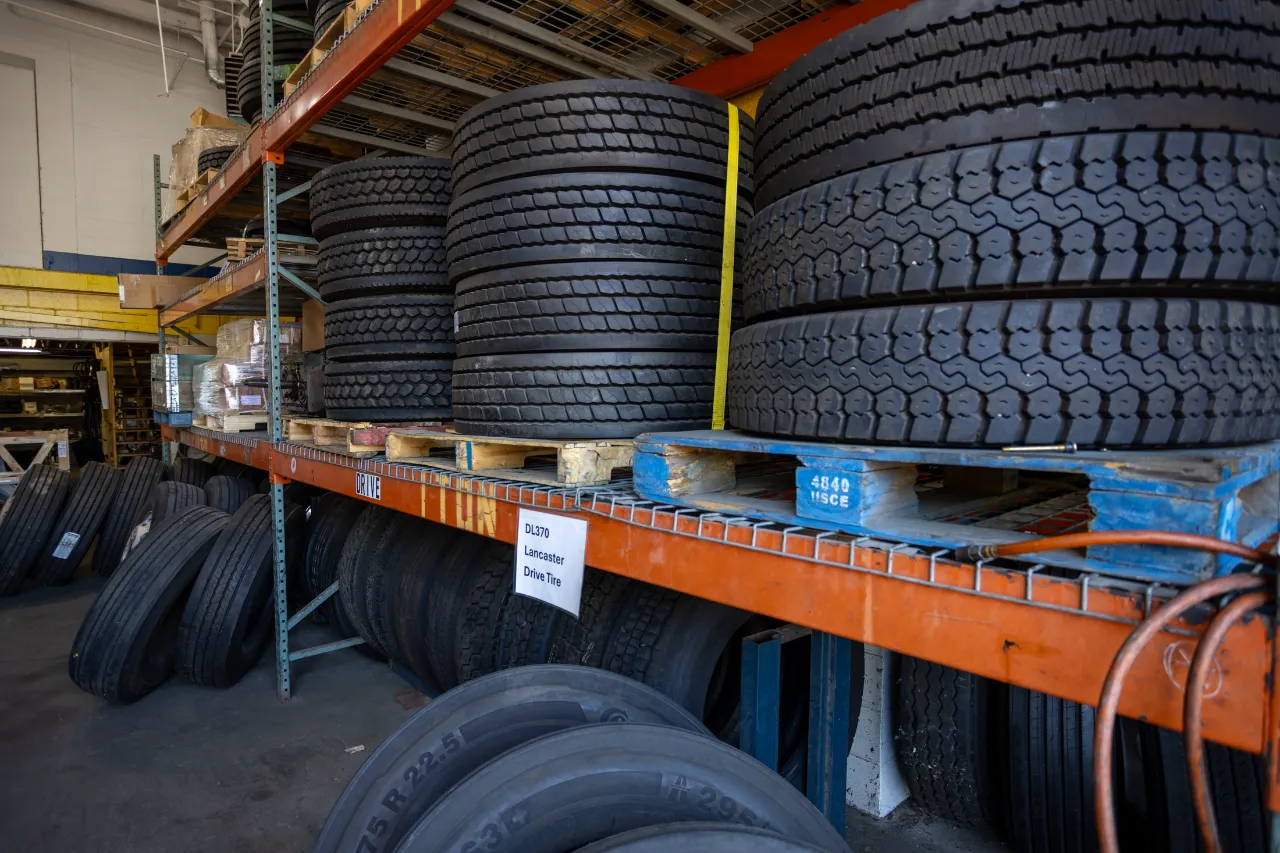Tire blowouts can lead to seriously dangerous situations, especially when you're hauling tens of thousands of pounds across I-90 or navigating the hills near the Black Hills. While heavy-duty tires are engineered for extreme loads and long hours on the road, they’re not immune to failure. And more often than not, blowouts stem from avoidable tire maintenance mistakes.
Here are five of the most common slip-ups that could be costing you tread—and safety.
1. Ignoring Tire Pressure (It’s More Than a Number)
Let’s start with the obvious one: improper inflation. This isn’t about “checking pressure every now and then.” It’s about consistent and accurate monitoring of cold tire pressure, ideally before every haul.
Underinflated tires generate excess heat due to increased surface contact with the road. That heat? It builds up fast and weakens the internal structure of your tire. On the flip side, overinflated tires reduce your tire’s contact patch, increasing the risk of uneven wear and explosive failures.
Rapid City’s fluctuating temps, especially during shoulder seasons, can drop your PSI overnight. So don’t rely on last week’s readings—check them before you roll.
Pro tip: Install a tire pressure monitoring system (TPMS) for real-time data—especially critical for long hauls.
2. Overlooking Load Ratings and Axle Distribution
Every tire has a load rating, and exceeding it—especially during peak freight seasons—can spell disaster. Blowouts often happen when tires are forced to carry more weight than they were built for. But here’s the kicker: even if you’re technically under your truck’s GVWR, improper axle weight distribution can overload individual tires.
That means one axle, or worse, one side of your vehicle, could be bearing the brunt. Always cross-check your tire specs, trailer load, and axle scales to ensure weight is evenly distributed.
3. Neglecting Tire Inspections (Visual Isn’t Always Enough)
A quick glance before hitting the road doesn’t cut it. Sidewall cracks, tread separations, embedded debris, and uneven wear patterns often hide in plain sight. And in the heavy-duty world, one overlooked issue can escalate fast.
Here’s what to look for during a thorough tire inspection:
- Tread depth using a proper gauge (never eyeball it)
- Bulges or blisters—these signal internal damage
- Valve stem integrity
- Signs of heat damage, like discoloration or rubber degradation
Bonus: Get in the habit of checking dual tires individually. A hidden flat inner tire can go unnoticed until it’s too late!
4. Skipping Tire Rotation and Alignment
Most fleets rotate tires only when they think of it—which is often “never.” But consistent tire rotation evens out tread wear, especially for steer, drive, and trailer axles that wear at different rates.
Combine that with misalignment, and you’ve got a perfect recipe for premature tire death. If your truck pulls to one side or your steering wheel isn’t centered, it’s time for a realignment. Not just for comfort—but for tire longevity.
In areas like Rapid City, where elevation and terrain vary drastically, suspension and alignment wear down quickly. Rotating and aligning your tires regularly keeps your rig predictable and your rubber intact.
5. Using the Wrong Tires for the Job
Not all heavy-duty tires are created equal. Running long-haul highway tires on a mixed-service route that includes construction sites, gravel, or dirt roads is like wearing dress shoes to a rodeo—bad fit, bad result.
Make sure your tire’s application type matches your route and load. For instance:
- Regional tires are great for short hauls and frequent stops.
- Long-haul tires handle heat dissipation better for extended driving.
- On/off-road tires have reinforced sidewalls for mixed terrain.
Choosing the wrong type affects wear rate, traction, and yes—blowout risk.
Conclusion: Blowouts Don’t Just Happen. They’re Preventable.
Most tire blowouts aren’t freak accidents. They’re the result of small, repeated maintenance mistakes that fly under the radar—until you’re sidelined on a shoulder with a shredded tire and a costly delay.
By focusing on proper tire pressure, load distribution, detailed inspections, rotation/alignment, correct tire selection, and partnering with a professional truck tire repair shop, you can significantly reduce your risk of a blowout—and keep your rig rolling safely through Rapid City and beyond.
.svg)


.webp)
%20(1).webp)





